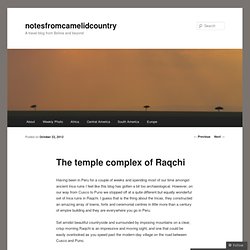

Pyramids, Stonehenge, Easter Island and the Great Pyramid explained by Wallace Wallington! New find challenges ‘simple’ Australian artefacts assumption. PURPOSLEY sharpened or ‘retouched’ stone axes evolved in Australia thousands of years before they appeared in Europe according to researchers studying the south-east Asian archaeological record.

They found 30,000-year-old flakes from ground-edged axes at a site near Windjana Gorge in the central Kimberley. In a recent paper with Professor Sue O’Connor, UWA archaeologist Jane Balme says the evidence collected challenges common assumptions about paleolithic innovations. “The suggestion that all innovation has to come from the Old World is not true because clearly ground-stone axes were created here,” Prof Balme says. She notes that they were also made in Japan at a slightly later date, by people who would have had no contact with either Australian Aborigines or people in Africa and Europe. Prof Balme says retouched axes are just one example of material culture developing independently in various parts of the world, as people have always evolved new technologies to meet their needs.
Notes: Strange Phenomena In The Land Of The Inca. The temple complex of Raqchi. Having been in Peru for a couple of weeks and spending most of our time amongst ancient Inca ruins I feel like this blog has gotten a bit too archaeological.

However, on our way from Cusco to Puno we stopped off at a quite different but equally wonderful set of Inca ruins in Raqchi. I guess that is the thing about the Incas, they constructed an amazing array of towns, forts and ceremonial centres in little more than a century of empire building and they are everywhere you go in Peru. Set amidst beautiful countryside and surrounded by imposing mountains on a clear, crisp morning Raqchi is an impressive and moving sight, and one that could be easily overlooked as you speed past the modern-day village on the road between Cusco and Puno.
Temple complex at Raqchi, Peru Raqchi was a major religious centre and home to a temple complex and palace that housed the great and the good of the Inca world. Circular storehouses at the Raqchi temple complex, Peru. Inca World: Creator God Viracocha And The Ancient Teachers. Subterranean Water Channels Of Nazca Peru. Prehistoric Hi-Tech Nanospirals Barely Visible To The Naked Eye - Still Remain An Unsolved Mystery.
MessageToEagle.com - Strange microscopically small nanospirals within material that had to be at least 100,000 years old have been detected in several places, during a routine investigation of mineral deposits in the Ural Mountains in 1992.

The origin of these extraordinary but strange artifacts that the human eye can barely see - is still not explained. The nanospirals are of copper, tungsten or molybdenum. The latter two metals along with others, are used in electronics and rocket technology. The nanospirals are mainly made of tungsten and their cores are tungsten or molybdenum. Ones discovered at a later date were also made of copper. Fascinating is the spirals' proportion due to their surprising regularity, which indicates that they could only have been manufactured by mechanical means. Their date of origin is estimated between 300,000 and 100,000 BC. © MessageToEagle.com Follow MessageToEagle.com for the latest news on Facebook and Twitter ! Recommend this article: Wie maakte toch deze zeer nauwkeurige portolaankaarten? Aan het eind van de dertiende eeuw doken ze opeens op: heel nauwkeurige kaarten van de Middellandse en Zwarte Zee.

Lang gingen onderzoekers ervan uit dat middeleeuwse Europese cartografen de kaarten maakten. Maar nieuw onderzoek van de universiteit Utrecht weerlegt dat nu: de kaarten kunnen niet in het middeleeuwse Europa zijn gemaakt. Portolaankaarten worden ze genoemd: heel realistische zeekaarten. Het oudste exemplaar stamt uit de dertiende eeuw. En die kaart lijkt wel uit het niets te verschijnen. Zeelui Tot op heden namen onderzoekers aan dat de kaarten tot stand waren gekomen met behulp van ervaren zeelieden. Afbeelding: Roel Nicolai. Projectie Nicolai baseert die conclusie op verschillende argumenten. Maar als de middeleeuwse cartografen in Europa deze kaarten niet maakten, wie maakte ze dan wel?
Evidence Of Ancient Stone Constructions 12,000 Years Old In Peru? 6,500-year old tin-bronze from Serbia. Laird Scranton (made with Spreaker) Angkor Wat, Giza, Paracas and the World-Wide Grid. In their outstanding book Heaven's Mirror, Graham Hancock and Santha Faiia point out the undeniable fact that Angkor Wat is located seventy-two degrees east of Giza in Egypt (page 254).

Seventy-two is an important precessional number. It is highly unlikely that the site of Angkor Wat would be located such an important number of degrees of longitude from the site of the Great Pyramid at Giza simply by accident, especially because both the Great Pyramid and the art and architecture of Angkor Wat deliberately employ precessional numbers and symbology in their construction and (in the case of Angkor Wat) in their symbology, as Graham Hancock discusses in Heaven's Mirror and other books (including Fingerprints of the Gods). The fact that Angkor Wat bears a name which is made up of two sacred Egyptian words -- Ankh and Horus -- makes the connection between Giza and Angkor even more certain to be deliberate and not a coincidence. Further, as Joseph P.